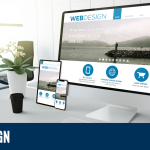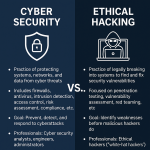Starting with web design can be exciting! Here’s a roadmap to kickstart your journey:
- Learn HTML: HTML (Hypertext Markup Language) is the foundation of web design. It defines the structure of your web pages. There are many online tutorials and courses available to learn HTML, such as Codecademy, W3Schools, and Mozilla Developer Network (MDN).
- Master CSS: CSS (Cascading Style Sheets) is used to style your HTML and make it visually appealing. Learn how to apply styles, colors, layouts, and animations to your web pages. Websites like CSS-Tricks and freeCodeCamp offer excellent resources for learning CSS.
- Understand Responsive Design: With the increasing use of mobile devices, it’s crucial to design websites that look good on all screen sizes. Learn about responsive design principles and techniques using CSS frameworks like Bootstrap or Flexbox and CSS Grid.
- Learn JavaScript: JavaScript is a programming language that adds interactivity and dynamic behavior to your web pages. Start with basic JavaScript concepts like variables, functions, and loops, then progress to DOM manipulation and event handling. Resources like JavaScript.info, MDN Web Docs, and freeCodeCamp offer comprehensive JavaScript tutorials.
- Explore Design Principles: Understanding design principles like typography, color theory, layout, and user experience (UX) design is essential for creating visually appealing and user-friendly websites. Websites like Canva Design School, Designmodo, and Smashing Magazine provide valuable insights into design principles.
- Practice Regularly: The key to mastering web design is consistent practice. Start by building simple projects like personal websites, portfolios, or small business sites. As you gain confidence, take on more complex projects to challenge yourself and improve your skills.
- Stay Updated: The field of web design is constantly evolving with new technologies and trends. Stay updated with the latest developments by following blogs, attending web design conferences, and participating in online communities like Stack Overflow, Reddit’s r/web_design, and Designer Hangout.
- Build Your Portfolio: Create a portfolio showcasing your web design projects. It’s a great way to demonstrate your skills to potential clients or employers. Include a variety of projects to showcase your range and expertise.
Remember, web design is a combination of technical skills and creativity, so don’t be afraid to experiment and push your boundaries. Good luck on your web design journey!







